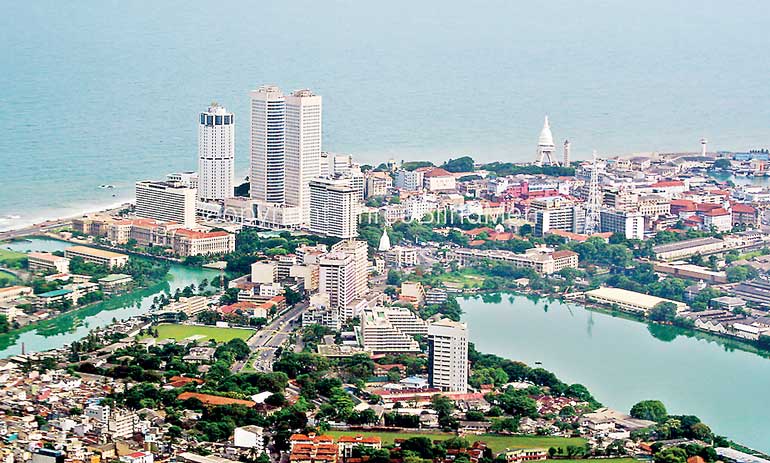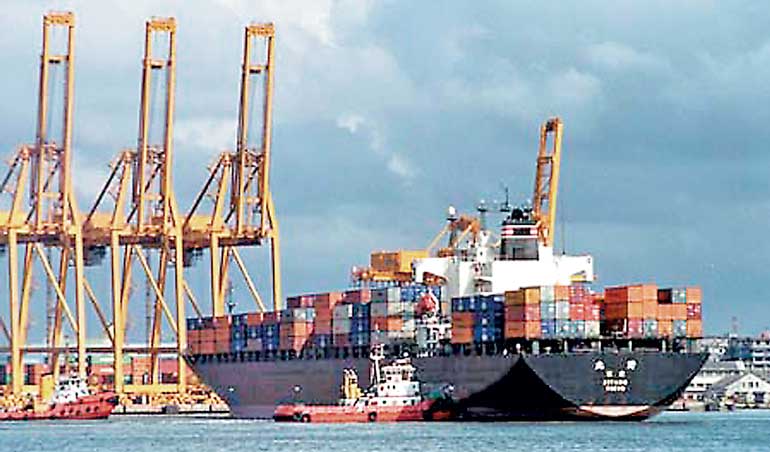Tuesday Mar 18, 2025
Tuesday Mar 18, 2025
Wednesday, 26 August 2015 00:00 - - {{hitsCtrl.values.hits}}

 Currently, Sri Lankan exporters have duty free access to the Indian market except for 429 items and products which receive specific concessions (i.e., textiles, garments, tea, pepper, desiccated coconut, bakery shortening). So stipulates the ILFTA. But do we really have easy and free access to the Indian market for our products?
Currently, Sri Lankan exporters have duty free access to the Indian market except for 429 items and products which receive specific concessions (i.e., textiles, garments, tea, pepper, desiccated coconut, bakery shortening). So stipulates the ILFTA. But do we really have easy and free access to the Indian market for our products?
By Suwendrani Jayaratne
Irrespective of whether the Indo-Lanka FTA (ILFTA) is going to be extended to a Comprehensive Economic Partnership Agreement (CEPA) or not, one cannot ignore the importance of the Indian market for Sri Lankan exporters.
It is indeed a large market with 1.3 billion people and a rising middle-class – those who earn between INR 20,000-INR 100,000 a month has gone up from 25 million in 1996 to over 160 million in 2013. India is expected to outperform China in 2015 and 2016, with growth boosted by policy reforms, rising investments and lower oil prices.
Furthermore, a half of India’s population is under the age of 25 years, and with 12 million entering the labour force each year, India is well positioned to reap the benefits of a demographic dividend.
Currently, Sri Lankan exporters have duty free access to the Indian market except for 429 items and products which receive specific concessions (i.e., textiles, garments, tea, pepper, desiccated coconut, bakery shortening). So stipulates the ILFTA. But do we really have easy and free access to the Indian market for our products?
Exporters at various forums have highlighted the practical difficulties of trading with India since the ILFTA came into operation in 2000. A recent study by the Institute of Policy Studies of Sri Lanka (IPS) highlights some of these issues and suggests measures that can be undertaken to facilitate bilateral trade.
Trade facilitation related issues facing Sri Lankan exporters under the ILFTA
Rejection of products entitled for ILFTA concessions due to ‘unawareness’ of officials was identified to be one of the main issues confronting some exporters. Some officials are not fully aware of certain goods and what category/HS code they should fall under, resulting in exporters having to pay additional duties. There can be a lot of paperwork and red tape in the clearance process which inevitably leads to delays and corruption.
Non-acceptance of Sri Lankan standard certification at the Indian end has led to delays and increased costs. The Sri Lanka Standards Institution (SLSI) has signed a MoU with the Export Inspection Council of India in 2003 whereby, Sri Lanka recognises Indian quality standard/product certification for over 80 identified items. However, there has been no reciprocal agreement signed to state that India would accept quality standards/products certification issued by Sri Lanka.
Excessive time taken for product testing was identified to be a critical issue facing exporters of perishable goods. With the introduction of new food safety and sanitary regulations by the Food Safety and Security Authority of India (FSSAI), exporters such as that of strawberries have stopped exporting to India. The new regulations imposed by India in 2012 require sampling and testing of food shipments to India. This can take up to three to four days and highly perishable food which have a shelf life of below seven days become inconsumable by the time the shipments are released.
Excessive testing by Indian authorities was also deemed unnecessary. For instance, samples of garment products are taken for testing by Customs. According to some exporters, if a consignment is a branded product with 100 pieces of garments, five to seven pieces are taken for sample testing. It was felt that this was unnecessary and could be minimised.
Complexity and difficulties in obtaining information on new regulations. Sometimes, the complexity of the information relating to new regulations (i.e., the recent food safety standard regulations) makes it difficult for traders, especially the small and medium enterprises, to comprehend and meet the requirements.
Stringent labeling requirements. Some of the labeling requirements by India are very stringent and there is an information gap with regards to the requirements at that end.
Lack of efficient border controls and coordination among relevant authorities in India, have led to considerable delays. Border control systems are not online, leading to limited information sharing and delays and complications (i.e., different ports demand different sets of documentation). The need to get clearance from multiple controllers at sea as well as land borders was also identified by some exporters to be one of the main hindrances to freer movement of goods.
The absence of a formal body or a help desk to address problems arising when trading under the Agreement is an impediment in using the ILFTA. When problems arise regarding a shipment (i.e., documentation), there is no formal body of authority that can take up complaints and address them quickly.
Fixing the problems
Challenges faced by Sri Lanka’s exporters to India have not changed drastically over the years and remain more or less the same. Fixing these is far from simple, but the steps that should be undertaken to facilitate trade between the two countries are widely known among stakeholders. It is up to policy makers in both countries to address them in a diligent manner.
Facilitating testing and certification process: When exporting goods, products should conform to standards and regulations set by the importing country or the buyer. However, this becomes a barrier if the process is not facilitated and the testing requirements are not practical, leading to high costs and delays. Mutual Recognition Agreements (MRAs) between India and Sri Lanka can assist in reducing the necessity to carry additional checks at the point of import. Setting up an accredited testing facility from India in Sri Lanka may be an option.
Also, the delays that occur as a result of testing products in locations far from the port can be avoided, if the requisite checks can be carried out at the port of entry and within a specified period of time. This is an essential requirement for perishable items. If the goods could be checked by the authorised designated labs/bodies prior to the shipment would be even more beneficial. The India-Singapore Comprehensive Economic Cooperation Agreement (CECA), for example, provides a framework for MRAs which prevent duplication of product testing and certification.
Furthermore, traders need to be better informed of services available to them regarding standards and other regulatory requirements. For example, the SLSI offers all stakeholders access to standards and regulatory information of any other country, technical enquiries on national, foreign and international standards, etc. However, these facilities are not fully utilized by traders.
Streamlining procedures and sharing information: The need to streamline procedures and improve efficiency of the Indian customs was emphasised by many traders to facilitate trade between the two countries. The demand for different documentation and different interpretations of the Agreement at different ports in India has made exporting difficult and confusing. It was mentioned that some traders are not motivated to trade with India because of these hurdles.
Educating traders: Some of the delays and complexities arise due to the laxity and ignorance of traders. For example, textiles shipments are sometimes sent with dangerous cargo. In such cases, containers with dangerous cargo are transferred to a separate warehouse, resulting in longer time to clear the textiles. This is more a responsibility of the loading party as importers have less control over such situations.
Improving private sector consultation and engagement, prior to and during any further negotiations with India to identify practical issues in doing business: Traders highlight that in addition to technically competent government officials, inputs from the private sector are key to negotiations because the trading process is far more complex than that on paper. Stakeholder consultation of those involved in the trading process including logistics companies, ports authority, customs, banks, shippers, traders, chambers and border protection agencies will ensure that every step of the trading process is looked into facilitate the flow of goods between the two countries.
Highlighting businesses that have successfully penetrated the Indian/Sri Lankan markets: While it is possible to identify both Indian and Sri Lankan companies that have successfully penetrated the Sri Lankan and Indian markets, it is important to highlight, draw and share their experiences with the wider trading community in a bid to illustrate successful cases of the ILFTA. Often the most vocal are those that were not successful in making in-roads to the Indian market. It is important to bring out how the barriers could be overcome to improve trade with India in order to reap greater benefit from the Agreement.
Establishing a Help/Information Desk: There is a lack of knowledge of the ILFTA at various stages of the trading process. Establishing an enquiry point will not only address information gaps, but also provide traders additional confidence of knowing that there is a local authority with the necessary contacts to facilitate trade with India. However, those manning such a unit should be trained professionals if they are to effectively assist the trading community. However, till such an enquiry point is set up, it is crucial that exporters bring to notice any complaints they have, in writing, to the Department of Commerce, Sri Lanka.
Incorporating trade facilitation into the ILFTA: Trade facilitation is covered in many of India’s Comprehensive Economic Cooperation Agreements (CECAs) and Comprehensive Economic Partnership Agreements (CEPAs). Although it has been suggested that trade facilitation issues would be addressed in a possible CEPA between India and Sri Lanka, dealing with some of the pressing issues would be an important step, especially in building confidence among traders. It would also help change the negative perceptions attached to trading with India and assist in promoting trade between the two countries.
(Suwendrani Jayaratne is a Research Officer at the Institute of Policy Studies of Sri Lanka (IPS). To view this article online and to share comments, visit the IPS Blog ‘Talking Economics’ – www.ips.lk/talkingeconomics.)
Discover Kapruka, the leading online shopping platform in Sri Lanka, where you can conveniently send Gifts and Flowers to your loved ones for any event including Valentine ’s Day. Explore a wide range of popular Shopping Categories on Kapruka, including Toys, Groceries, Electronics, Birthday Cakes, Fruits, Chocolates, Flower Bouquets, Clothing, Watches, Lingerie, Gift Sets and Jewellery. Also if you’re interested in selling with Kapruka, Partner Central by Kapruka is the best solution to start with. Moreover, through Kapruka Global Shop, you can also enjoy the convenience of purchasing products from renowned platforms like Amazon and eBay and have them delivered to Sri Lanka.
Discover Kapruka, the leading online shopping platform in Sri Lanka, where you can conveniently send Gifts and Flowers to your loved ones for any event including Valentine ’s Day. Explore a wide range of popular Shopping Categories on Kapruka, including Toys, Groceries, Electronics, Birthday Cakes, Fruits, Chocolates, Flower Bouquets, Clothing, Watches, Lingerie, Gift Sets and Jewellery. Also if you’re interested in selling with Kapruka, Partner Central by Kapruka is the best solution to start with. Moreover, through Kapruka Global Shop, you can also enjoy the convenience of purchasing products from renowned platforms like Amazon and eBay and have them delivered to Sri Lanka.